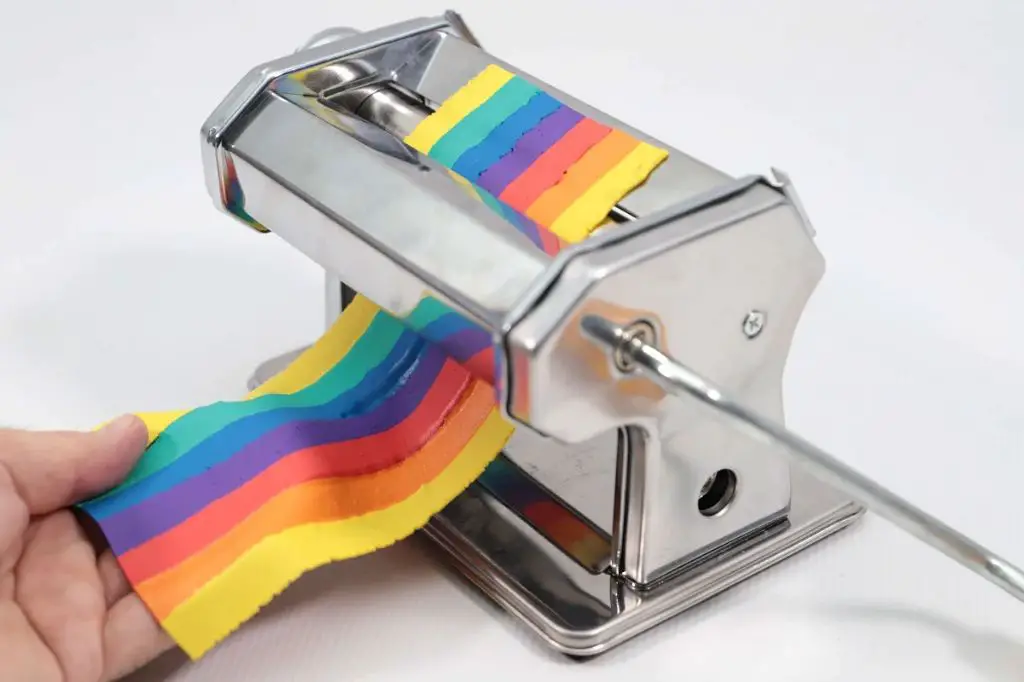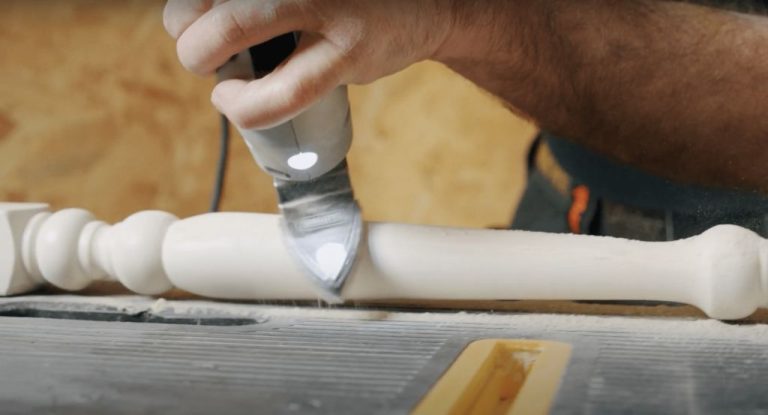Does Oven Bake Clay Break Easily?
What is Oven Bake Clay?
Oven bake clay, also known as polymer clay, is a type of modeling clay that cures and hardens when baked in a regular home oven. It is made of PVC resin, plasticizers, and pigments. When raw, oven bake clay remains flexible and workable. Once baked, it hardens into a strong, durable material.
There are several popular brands of oven bake polymer clay, including Sculpey, Fimo, Premo, Cernit, and Kato Polyclay. Each brand varies slightly in texture, finish, and baking requirements. Polymer clay comes in a wide range of colors that can be blended and mixed together.
Other types of “oven bake clay” include air dry clay and cold porcelain. Air dry clay dries naturally at room temperature, but can also be hardened in the oven. Cold porcelain contains glue and hardens when it cools after baking.
The advantages of oven bake clay include its durability, flexibility when raw, and ability to achieve fine detail. It does not dry out when exposed to air like other clays. Drawbacks include susceptibility to fingerprints and being heavier than alternatives like paper clay or air dry clay.
Does Oven Bake Clay Break Easily?
Oven bake clay can break more easily than other clays like ceramic clay or air dry clay. This is because oven bake clays like polymer clay contain plasticizers that make the clay flexible and workable. Over time and exposure to heat, these plasticizers can leach out causing the clay to become brittle and prone to cracking or breaking (https://www.justanydream.com/blogs/news/why-is-my-polymer-clay-breaking-after-baking-and-how-to-avoid-it).
There are a few factors that can cause oven bake clay sculptures or projects to break:
- Improper baking – Baking at too high of a temperature or for too long can cause the clay to crack or become brittle. Always follow the manufacturer’s instructions for proper baking temps and times.
- Inadequate conditioning – Conditioning the clay by kneading and warming it in your hands before sculpting helps distribute the plasticizers evenly and improves its strength. Under-conditioned clay is more prone to cracking.
- Clay age – Old or expired clay that has lost some of its plasticizers will be more brittle.
- Thin or narrow pieces – Thin sculpted areas like spikes or tails are weaker points that can snap off more easily.

There are a few tips to help prevent oven bake clay from breaking (https://www.sculpey.com/blogs/blog/6-things-to-avoid-when-baking-polymer-clay):
- Condition clay thoroughly before sculpting
- Avoid baking at temps higher than recommended
- Bake for the minimum time needed
- Reinforce thin or narrow sections with foil or wire
- Handle baked pieces carefully to prevent drops or shocks
Proper Baking Instructions
When baking oven-bake polymer clays like Sculpey, it’s important to follow the manufacturer’s instructions for temperature and bake times. Most clays recommend baking at temps between 230-275°F for 15-30 minutes per 1⁄4 inch of thickness [1]. Thicker pieces will require longer bake times.
For accuracy, use an oven thermometer placed inside the oven instead of relying solely on the oven’s built-in thermostat. Oven temperatures can fluctuate, so monitoring with a thermometer ensures the clay bakes at the proper temp. Set a timer as well for the recommended bake time.
After baking, allow the clay piece to cool completely inside the oven before handling. Cooling it slowly prevents cracking or breakage that can happen if cooled too quickly. Once cooled, the clay should be rigid and durable.
Storing Oven Baked Clay
Properly storing your oven-baked clay creations is important to preserve their condition and prevent breakage. The best storage containers are airtight options like plastic bags or boxes. Ziploc bags work well for smaller items, while plastic containers with lids are good for larger sculptures (Source).
You’ll want to avoid exposing baked clay to moisture, which can cause swelling or warping. Storing pieces in a dry location is ideal. Dust can also be problematic if it builds up on the clay over time. Wiping down pieces before storing and using airtight containers prevents dust accumulation (Source).
In terms of temperature, room temperature storage is typically recommended. While some advise refrigeration, condensation from temperature fluctuations could lead to moisture damage. As long as the storage area doesn’t get overly hot, room temperature in airtight containers works well for maintaining the integrity of oven-baked clay creations.
Strength Testing Oven Baked Clay
One way to test the strength of oven baked clay is to see how much weight or pressure it can withstand before breaking. You can hang weights from a clay piece or place books or other heavy objects on top. Compare the maximum load your clay supports to other clays to evaluate relative strength.
Oven baked clay is often more brittle and prone to cracking than air-dry or polymer clays. However, you can reinforce fragile oven baked clay in several ways. Kneading sawdust, paper, or extra clay into the original mixture creates a composite material less likely to shatter. Applying liquid clay to the surface and rebaking seals pores and flaws. Coating finished pieces with polyurethane or epoxy resin also improves durability.
With proper preparation and handling, oven baked clay can develop satisfactory strength for most applications. Test pieces allow optimizing the baking time and temperature for your particular clay formula. Just take care not to drop delicate clay creations once finished.
Fixing Cracked or Broken Projects
If your clay project develops cracks or breaks during baking or afterwards, don’t fret! There are techniques for fixing many of those imperfections.
For cracks and small breaks, you can often simply glue the pieces back together. A great adhesive for polymer clay is light-cured resin or UV resin. Just apply a thin layer of resin over the crack and cure it with a UV lamp. The resin will penetrate into the crack for a strong bond.
You can also reinforce weak areas and cracks by adding a thin “bandage” of fresh clay over the damaged area. Roll a tiny snake of clay and press it into the crack or weak spot. Smooth it over the surface and rebake the piece to adhere the patch.
If the damage is too extensive, you may need to start over with a new clay sculpture. Cracks covering large sections or multiple broken pieces can be difficult to restore. In that case, assess if it’s worth salvaging or better to begin again with a new lump of clay.
Tips for Sturdy Clay Sculptures
When working with oven bake polymer clay, there are some techniques you can use to help ensure your finished pieces are sturdy and durable:
Using an armature or support structure inside the clay is one of the best ways to reinforce sculptures and prevent breakage. An armature made from wire, aluminum foil, wood, or other materials gives the soft clay something sturdy to hold onto and prevents thin or elongated sections from drooping or snapping off. According to the instructable Sculpting with Polymer Clay, inserting an armature is essential for sculpting figurines, animals, or anything with skinny appendages. Simple pieces of wire bent into shape prior to adding the clay will make a huge difference in durability.
For very large pieces, it helps to bake the sculpture in sections, rather than all at once. The inner portions will be thoroughly cured, providing structural integrity, before adding additional layers of soft clay on the outside. According to the article How to Properly Bake Polymer Clay, baking large solid pieces can result in uncured centers. Section by section baking prevents this issue.
Properly conditioning the clay before sculpting is also key for stability. Kneading and rolling to warm up and soften oven bake clay makes it more pliable and less likely to crack during shaping. The YouTube video Best Oven Bake Polymer Clay Tips and Tricks recommends 5-10 minutes of conditioning before starting any project, and frequent reconditioning during long sculpting sessions.
Common Causes of Breakage
There are three main reasons that oven-baked clay pieces tend to break or crack: inadequate baking, thin areas/projections, and stress points/improper handling.
If polymer clay is not baked long enough or at a high enough temperature, it will not fully cure and harden. Polymer clays require a minimum baking time and temperature to completely polymerize and gain strength. Pieces that are under-baked will be prone to cracking and breaking even with light use. According to The Blue Bottle Tree, baking most polymer clays at 275°F for a minimum of 15 minutes per 1/4 inch of thickness is recommended to fully cure the clay. https://thebluebottletree.com/basics-baking-polymer-clay/
Areas of a polymer clay piece that are too thin or have thin projections are also prone to cracking and breaking. Thin areas have less strength and structural integrity. Sculpting guides recommend maintaining a thickness of at least 1/4 inch for sturdiness. If certain areas need to be thin for design purposes, additional baking time, reinforcement armatures, or fillers can help strengthen those sections.
Stress points on a polymer clay piece where elements join together or where weight is concentrated can cause cracks and breaks if not properly reinforced. Handles, attachments, intersections, weight-bearing areas require extra attention. Proper conditioning, smoothing seams, using liquid polymer clay or acrylic mediums at joints, and inserting armature wires helps minimize stress. Lifting finished pieces before fully cooled and excessive bending during handling can also introduce cracks.
Preventing Breakage from Drops and Falls
Preventing your oven-baked clay creations from breaking due to drops or falls requires taking some precautions:
When shipping fragile clay pieces, it’s important to pack them very securely. Wrap the piece in bubble wrap or foam and place it in a sturdy box filled with packing material like crumpled paper or styrofoam peanuts. Make sure there is no room for the object to shift around inside the box during transit. You may need to use extra tape on the seams of the box for added security.
For displaying clay sculptures at home or events, choose secure bases and supports. Avoid slender pedestals that can be knocked over easily. For wall hangings, use strong fasteners placed at key weight-bearing points. Consider reinforcing vulnerable thin areas like slender limbs or narrow joins with inserted wires, toothpicks or aluminum foil balls before baking.
When handling baked clay pieces, be cautious and avoid dropping. Carry large or heavy items with two hands. Display fragile sculptures out of high traffic areas where they are less likely to get accidentally bumped or knocked over.
Taking measures to pack, display and handle oven-baked clay works carefully can help prevent cracks or breaks from accidental drops and falls.
Conclusion
Oven bake clay like Sculpey can break easily if not conditioned, baked, and handled properly. The key points are:
- Knead clay thoroughly before baking according to package directions to condition it and prevent cracking.
- Avoid baking too fast or unevenly which can create internal stress and fractures.
- Let clay cool completely after baking before handling to prevent thermal shock breakage.
- Store baked clay pieces carefully and do not subject them to bending or shocks.
- Test clay strength by bending small pieces before committing to a large project.
- Dropping on hard surfaces is the most frequent cause of shattering.
To minimize the chances of breakage, work methodically and patiently. Fully knead clay, bake at recommended temps, and let cool properly. Handle completed pieces with care and avoid drops. Test baking and strength first with scraps. With some care and planning, oven baking clay can result in stunning creations.


